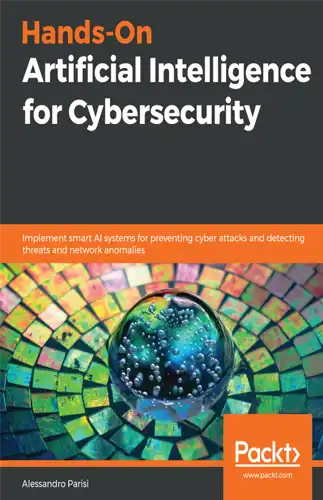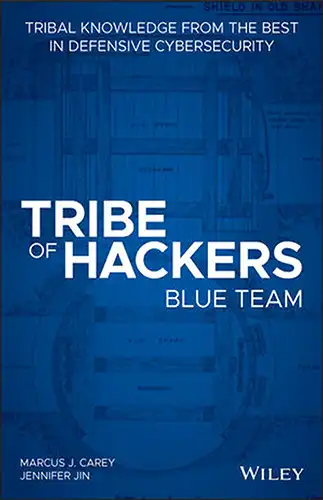The Top Cyber Crimes and Its Impact
Cyber crimes have emerged as one of the most significant threats to individuals, organizations, and even nations in the digital age. The rapid advancement of technology and the proliferation of internet-connected devices have provided cybercriminals with a vast playground to exploit. These crimes, committed using computers and the internet, encompass many malicious activities, including financial fraud, identity theft, cyber espionage, and ransomware attacks. The anonymity afforded by the internet allows perpetrators to operate from anywhere in the world, often making it difficult for authorities to track them down and bring them to justice. Consequently, the global impact of cyber crimes has escalated, prompting a surge in efforts to enhance cybersecurity measures and protect vulnerable systems.
Financial fraud and identity theft are among the most common forms of cybercrime, targeting individuals and businesses alike. Cybercriminals use sophisticated techniques such as phishing, malware, and social engineering to steal sensitive information like credit card numbers, bank account details, and personal identification. This stolen data is then used to commit fraud, resulting in significant financial losses for victims. Identity theft, where criminals impersonate individuals to gain access to their financial resources or commit other crimes, can have long-lasting and devastating effects on victims' lives. As these crimes become more prevalent, financial institutions and companies handling personal data have intensified their efforts to implement robust security protocols, including multi-factor authentication and advanced encryption, to safeguard against unauthorized access.
Skip To:
Cyber espionage and ransomware attacks are more severe, often targeting critical infrastructure, government agencies, and large corporations. Cyber espionage involves covertly stealing confidential information, such as trade secrets or government intelligence, by state-sponsored hackers or cybercriminal groups. These attacks can undermine national security and economic stability, as seen in high-profile cases like the U.S. Office of Personnel Management breach in 2015. On the other hand, ransomware attacks involve encrypting a victim's data and demanding a ransom for its release. Such attacks can paralyze essential services, as demonstrated by the WannaCry attack 2017, which affected healthcare, transportation, and businesses globally. To combat these sophisticated threats, governments and organizations are investing in advanced cybersecurity technologies, conducting regular security audits, and fostering international cooperation to share intelligence and best practices in the fight against cyber crimes.
The Yahoo Data Breach (2013-2014)

The Yahoo data breach, one of the most significant data breaches in history, exposed the personal information of over three billion user accounts. This staggering breach occurred over two separate incidents in 2013 and 2014 but remained undisclosed until years later, significantly delaying the public's awareness of the extent of the compromise. The attackers believed to be state-sponsored actors from Russia, managed to exploit vulnerabilities in Yahoo's security infrastructure, gaining unauthorized access to sensitive user data. This data included names, email addresses, phone numbers, dates of birth, and hashed passwords, representing a vast trove of personal information that could be used for various malicious purposes.
The background of this breach highlights a significant failure in cybersecurity practices and protocols. Yahoo's security measures at the time were insufficient to prevent such a large-scale intrusion. Reports suggested that the attackers used a combination of phishing attacks and advanced malware to infiltrate Yahoo's systems. Once inside, they could navigate the network undetected for an extended period, extracting user data without raising alarms. The delay in disclosure, partly due to internal communication failures and a lack of urgency in addressing the breach, exacerbated the situation, leaving users vulnerable for a longer time and eroding trust in the company's ability to protect their information.
The impact of the Yahoo data breach was profound and far-reaching. Beyond the immediate loss of personal data for billions of users, the breach had severe financial and reputational consequences for Yahoo. The company's acquisition deal with Verizon was significantly affected; initially, it was valued at $4.83 billion, but the final sale price was reduced by $350 million due to the breach. This reduction reflected the anticipated costs of lawsuits, regulatory fines, and the necessity of enhanced security measures. Furthermore, the breach led to a cascade of legal challenges, including user class-action lawsuits and investigations by various regulatory bodies. The breach marked a turning point for Yahoo, underscoring the critical importance of robust cybersecurity measures and timely, transparent communication in maintaining user trust and corporate integrity.
The WannaCry Ransomware Attack (2017)

In May 2017, the world witnessed one of the most devastating cyber attacks in history: the WannaCry ransomware attack. This attack paralyzed critical infrastructure and services globally, targeting computers running the Microsoft Windows operating system. WannaCry worked by encrypting users' data and demanding ransom payments in Bitcoin to unlock the files. Within days, the ransomware had infected over 200,000 computers across 150 countries, severely disrupting healthcare services, transportation systems, and businesses.
The background of the WannaCry attack reveals a complex interplay of vulnerabilities and security lapses. The ransomware exploited a vulnerability known as EternalBlue, which was believed to have been developed by the U.S. National Security Agency (NSA) for intelligence purposes. This exploit was leaked by a hacking group called the Shadow Brokers in April 2017, just a month before the WannaCry outbreak. Despite Microsoft having released a patch to fix this vulnerability in March 2017, many systems, particularly those running older versions of Windows, remained unpatched and thus susceptible to the attack. The rapid spread of WannaCry highlighted the critical need for timely software updates and robust cybersecurity practices.
The impact of the WannaCry attack was immediate and profound. The United Kingdom's National Health Service (NHS) was one of the hardest-hit organizations, with at least 80 hospitals and healthcare facilities affected. This disruption led to the cancellation of thousands of medical appointments and operations, putting patients' lives at risk and creating a healthcare crisis. In addition to healthcare, various sectors, including telecommunications and logistics, have experienced significant operational disruptions. For instance, major companies like FedEx and Telefónica reported substantial service interruptions. The economic toll of the attack was enormous, with losses estimated in the billions of dollars due to downtime, lost productivity, and the cost of restoring affected systems.
Despite the widespread havoc, the financial gain for the attackers was relatively modest. The perpetrators collected around $140,000 in ransom payments, a small sum considering the scale of the attack. This disparity underscores the broader motives behind ransomware campaigns, which may include sowing chaos and demonstrating vulnerabilities rather than purely financial gain. The WannaCry attack served as a wake-up call for organizations worldwide, emphasizing the importance of cybersecurity vigilance, regular software updates, and the need for global cooperation in addressing cyber threats.
The Equifax Data Breach (2017)

In 2017, Equifax, one of the largest credit reporting agencies in the United States, suffered a massive data breach that exposed the personal information of approximately 147 million Americans. The compromised data included sensitive information such as Social Security numbers, birth dates, addresses, and driver's licenses. This breach represented one of the most significant data security failures in history, given the scale and sensitivity of the data involved. The breach occurred because Equifax failed to patch a known vulnerability in its web application software, Apache Struts, which had been publicly disclosed months earlier. This oversight allowed cybercriminals to gain unauthorized access to Equifax's systems, resulting in a catastrophic loss of personal information.
The background of the Equifax data breach underscores a critical lapse in cybersecurity practices and governance. The vulnerability in Apache Struts was identified, and a patch was made available in March 2017. However, Equifax did not apply this patch promptly, leaving its systems exposed. From mid-May to July 2017, attackers exploited this vulnerability to infiltrate Equifax's network and extract data. Equifax discovered the breach on July 29, 2017, but the company publicly disclosed the incident on September 7, 2017. This delay in notification drew significant criticism and raised questions about Equifax's transparency and crisis management protocols.
The impacts of the Equifax data breach were far-reaching and severe. For consumers, the exposure of personal information led to increased risks of identity theft and financial fraud. Many victims had to take proactive steps to protect their identities, including placing freezes on their credit reports and enrolling in credit monitoring services. The breach also resulted in a loss of trust in Equifax and raised broader concerns about the security of personal data held by credit reporting agencies. Equifax faced a barrage of legal challenges, including class-action lawsuits from affected consumers and investigations by federal and state regulators. In 2019, Equifax agreed to a settlement of up to $700 million to resolve these claims, with $425 million earmarked for consumer restitution and credit monitoring services. Additionally, the breach prompted legislative and regulatory scrutiny, leading to calls for more robust data protection laws and enhanced oversight of credit reporting agencies.
Equifax undertook significant measures to bolster its cybersecurity defenses and restore its reputation in response to the breach. These measures included overhauling its security infrastructure, investing in advanced threat detection technologies, and enhancing its incident response capabilities. The company also made leadership changes, including appointing a new Chief Information Security Officer (CISO) and establishing an independent committee to oversee cybersecurity initiatives. Despite these efforts, the Equifax data breach remains a stark reminder of the critical importance of cybersecurity vigilance and the far-reaching consequences of failing to protect sensitive information.
The Target Data Breach (2013)

During the bustling holiday shopping season 2013, retail giant Target experienced a massive data breach that compromised the credit and debit card information of approximately 40 million customers. This breach became one of the most notorious cyber incidents in retail history, highlighting significant vulnerabilities in the security practices of major corporations. The attackers accessed Target's network through a third-party HVAC contractor, utilizing stolen credentials to infiltrate the company's point-of-sale (POS) systems. This method of entry underscored the risks associated with third-party vendors and the need for stringent cybersecurity measures across the entire supply chain.
The background of the Target data breach reveals a sophisticated and well-coordinated attack. Cybercriminals initially targeted the HVAC contractor, Fazio Mechanical Services, by phishing emails that tricked employees into divulging login credentials. Once armed with these credentials, the attackers breached Target's network and installed malware on the POS systems. This malware captured payment card details, including card numbers, expiration dates, and CVV codes, as customers swiped their cards at checkout terminals. The stolen data was transferred to a remote server controlled by the attackers, who later sold the information on the black market. Target discovered the breach in late December 2013, but the damage had already been done by then.
The impact of the Target data breach was profound and multifaceted. Financially, Target incurred significant losses estimated at $162 million, covering costs related to legal fees, settlements, credit monitoring services for affected customers, and overhauling its security infrastructure. The breach also led to a steep decline in consumer confidence, as customers felt betrayed by the company's inability to protect their sensitive information. This loss of trust was reflected in a notable drop in holiday sales and a subsequent hit to Target's stock price. In the aftermath, Target faced numerous lawsuits from banks and consumers and investigations by federal and state authorities. The breach ultimately resulted in the resignation of Target's CEO and CIO, further emphasizing the severe repercussions of such cybersecurity failures.
The Target data breach underscored the critical importance of robust cybersecurity measures and the potential risks posed by third-party vendors. Target implemented several fundamental changes to strengthen its security posture in response to the breach. The company invested in advanced threat detection technologies, enhanced its encryption methods, and adopted more stringent access controls for third-party vendors. Additionally, Target appointed a new Chief Information Security Officer (CISO) and increased its focus on employee cybersecurity training. The breach also served as a wake-up call for the retail industry at large, prompting many companies to reevaluate and bolster their security practices to protect against similar threats in the future.
The Colonial Pipeline Ransomware Attack (2021)

In May 2021, the Colonial Pipeline, a central fuel pipeline system in the United States, was forced to shut down its operations due to a ransomware attack. This pipeline, which supplies nearly half of the fuel consumed on the East Coast, became the target of the DarkSide cybercriminal group. The attackers managed to infiltrate Colonial Pipeline's IT infrastructure, encrypting critical data and demanding a ransom payment to restore access. This incident marked one of the most significant cyberattacks on U.S. critical infrastructure, causing widespread fuel shortages and panic buying, especially in the southeastern United States.
The background of the Colonial Pipeline ransomware attack reveals a sophisticated and targeted approach by the DarkSide group, known for its ransomware-as-a-service (RaaS) model. This model allows affiliates to use the group's ransomware tools in exchange for a share of the ransom proceeds. In this case, the attackers gained access to Colonial Pipeline's network through a compromised password for a virtual private network (VPN) account no longer in use. Once inside, they deployed ransomware that encrypted the company's data, effectively bringing operations to a halt. The attack exposed significant vulnerabilities in the cybersecurity practices of critical infrastructure operators and highlighted the growing threat of ransomware to essential services.
The impacts of the Colonial Pipeline ransomware attack were immediate and far-reaching. The shutdown led to significant disruptions in gasoline, diesel, and jet fuel supply, causing fuel shortages and long lines at gas stations across several states. The panic buying and fuel hoarding exacerbated the situation, leading to further shortages and price increases. In response to the crisis, Colonial Pipeline paid the ransom of 75 Bitcoin, approximately $4.4 million. However, the U.S. Department of Justice recovered some ransom, highlighting the complexities of dealing with ransomware payments and the efforts to combat cybercrime.
The Colonial Pipeline attack underscored the vulnerability of critical infrastructure to cyber threats and prompted a significant response from both the public and private sectors. The incident increased efforts to bolster cybersecurity defenses in the energy sector, including implementing more stringent security measures and protocols. The U.S. government also took steps to enhance the resilience of critical infrastructure, issuing executive orders to improve cybersecurity standards and encouraging collaboration between the public and private sectors. Additionally, the attack spurred discussions about the need for better incident response strategies and the importance of maintaining robust cybersecurity practices to protect against future threats. The Colonial Pipeline ransomware attack is a stark reminder of the potential consequences of cyberattacks on critical infrastructure and the urgent need to address these vulnerabilities to safeguard national security and public welfare.
The Sony Pictures Hack (2014)

The 2014 hack of Sony Pictures Entertainment stands as one of the most infamous cyber attacks targeting a significant corporation. This highly publicized breach exposed the vulnerabilities of corporate cybersecurity and had wide-reaching repercussions. The attackers, who were believed to be linked to North Korea, infiltrated Sony's network, stealing and publicly releasing a trove of confidential data. This data included unreleased films, sensitive employee information, executive emails, and other internal communications. The attack was allegedly in retaliation for the upcoming release of "The Interview," a comedy depicting the fictional assassination of North Korean leader Kim Jong-un.
The background of the Sony Pictures hack reveals a complex and politically charged cyber assault. On November 24, 2014, Sony employees discovered that their computer screens had been replaced with a chilling image of a red skeleton and a message stating that the company had been hacked by the "Guardians of Peace." This group claimed responsibility for the attack and demanded that Sony cancel the release of "The Interview." Subsequent investigations by the FBI and other cybersecurity experts suggested that the hackers used sophisticated malware to breach Sony's network. They exploited weaknesses in Sony's cybersecurity defenses, gaining access to massive amounts of data and exfiltrating it over several months before launching the attack. The use of advanced persistent threats (APTs) and other high-level tactics pointed to a state-sponsored operation, with North Korea as the primary suspect.
The impacts of the Sony Pictures hack were severe and multifaceted. Financially, Sony faced immediate and long-term repercussions. The company incurred substantial costs related to IT repairs, legal fees, and measures to enhance cybersecurity. The public release of unreleased films and scripts resulted in potential revenue losses. At the same time, the exposure of sensitive employee information, including Social Security numbers and personal emails, led to privacy concerns and legal action. Employees filed lawsuits against Sony for failing to protect their data, leading to significant legal expenses.
Additionally, the breach caused considerable reputational damage. The leaked emails revealed controversial and embarrassing conversations among executives, straining relationships within the industry and leading to public backlash. The scandal culminated in the resignation of top executives, including co-chairman Amy Pascal.
In response to the attack, Sony Pictures implemented a comprehensive overhaul of its cybersecurity practices. The company invested heavily in advanced security technologies and protocols to prevent future breaches. This included enhancing network security, implementing multi-factor authentication, and conducting regular security audits and employee training. The Sony hack also had broader implications for the entertainment industry and corporate America, highlighting the critical need for robust cybersecurity measures. It underscored the potential for geopolitical tensions to spill over into the corporate realm, making cybersecurity not just a technical issue but a matter of national security. The Sony Pictures hack remains a stark reminder of the destructive potential of cyberattacks and the importance of vigilance in an increasingly digital world.
Navigating the Cyber Threat Landscape

These real-world examples of cyber crimes demonstrate the far-reaching and often devastating consequences of cyber threats in today's interconnected world. The incidents involving Yahoo, WannaCry, Equifax, Target, Colonial Pipeline, and Sony Pictures highlight the financial and operational impacts and the severe damage to reputation and trust. As cybercriminals continue to evolve, employing increasingly sophisticated techniques and exploiting new vulnerabilities, the stakes have never been higher for individuals, organizations, and governments.
The fallout from cyber crimes can be profoundly personal for individuals. Identity theft, financial fraud, and the loss of sensitive information can lead to long-term emotional and economic distress. To protect themselves, individuals must adopt good cybersecurity hygiene, such as using strong, unique passwords, enabling multi-factor authentication, regularly updating software, and being cautious of phishing attempts. Public awareness campaigns and education initiatives are vital in fostering a culture of cyber awareness and personal responsibility.
Organizations handling sensitive data or critical infrastructure must invest in robust security measures. These include deploying advanced threat detection systems, regularly updating and patching software, conducting comprehensive security audits, and ensuring stringent access controls. The role of third-party vendors also necessitates scrutiny, as demonstrated by the Target breach.
Organizations should develop and enforce rigorous security standards for their supply chains. Additionally, establishing a proactive incident response plan is essential to mitigate damage in the event of a breach.
Governments are crucial in creating and enforcing a regulatory framework that incentivizes strong cybersecurity practices. International cooperation is essential, as cyber crimes often transcend national borders. Collaborative efforts, such as sharing threat intelligence and best practices, can enhance global resilience against cyber threats. Governments must also support public-private partnerships to ensure a coordinated approach to cybersecurity.
The evolving landscape of cyber threats requires a multifaceted and proactive approach. Investing in robust security measures, fostering a culture of cyber awareness, and promoting international cooperation are crucial steps in mitigating the risks posed by cyber crimes. By working together, individuals, organizations, and governments can better protect the digital landscape and ensure a safer and more secure future for all. The lessons learned from past incidents underscore the need for vigilance, continuous improvement, and a commitment to safeguarding our digital lives against the ever-present threat of cybercrime.
Addressing Skill Gaps with Chauster's Comprehensive Cybersecurity Training to Defeat These Cyber Threats.

In the face of escalating cyber threats, organizations must prioritize equipping their workforce with the necessary skills to defend against sophisticated attacks. One critical challenge is addressing the skill gaps within their cybersecurity teams. Chauster, a leader in cybersecurity training, offers comprehensive and robust programs designed to fill these gaps and empower organizations to build a resilient defense against cyber threats.
Customized Training Programs
Chauster provides tailored training programs that address each organization's specific needs and vulnerabilities. By conducting thorough assessments, Chauster identifies skill gaps and develops customized training modules focusing on the most relevant and pressing threats. These programs cover various topics, from basic cybersecurity principles to advanced threat detection and response strategies. By tailoring the content to the organization's unique requirements, Chauster ensures that employees gain the practical knowledge and skills needed to protect their specific environment.
Hands-On Learning and Real-World Scenarios
One of Chauster's key strengths is its emphasis on hands-on learning and real-world scenarios. The training programs incorporate simulated cyber attacks and practical exercises that allow participants to apply their knowledge in realistic settings. This approach helps employees understand the tactics used by cybercriminals and develop effective countermeasures. By engaging in these simulations, participants gain valuable experience identifying, mitigating, and responding to cyber threats, enhancing their readiness to handle real-world incidents.
Continuous Education and Skill Development
The cybersecurity landscape constantly evolves, with new threats and vulnerabilities emerging regularly. Chauster recognizes the importance of continuous education and skill development to stay ahead of these challenges. Their training programs include ongoing updates and refresher courses to keep employees informed about cybersecurity trends and best practices. This commitment to continuous learning ensures that organizations can maintain a high level of preparedness and adaptability in the face of evolving threats.
Building a Cyber-Aware Culture
Beyond technical skills, Chauster's training programs emphasize the importance of building a cyber-aware culture within organizations. By educating employees at all levels about the significance of cybersecurity and promoting best practices, Chauster helps foster a proactive approach to security. This cultural shift encourages employees to remain vigilant, recognize potential threats, and take appropriate actions to safeguard sensitive information. A strong cyber-aware culture is critical in mitigating risks and enhancing overall organizational security.
Certification and Professional Development
Chauster's training programs also offer certification opportunities, allowing employees to validate their skills and knowledge in cybersecurity. These certifications are recognized within the industry and can significantly enhance career development and professional growth. By supporting employees in obtaining these credentials, organizations can build a highly qualified and motivated cybersecurity team that is better equipped to tackle the challenges of today's digital landscape.
Chauster offers a range of certifications tailored to various aspects of cybersecurity, including:
Certified Information Systems Security Professional (CISSP): This globally recognized certification covers a broad spectrum of cybersecurity topics, including risk management, network security, and access control. It is ideal for experienced security practitioners, managers, and executives.
Certified Ethical Hacker (CEH): This certification focuses on the skills needed to understand and address the tactics and techniques used by malicious hackers. It equips cybersecurity professionals with the knowledge to think and act like hackers to protect their systems better.
Certified Information Security Manager (CISM): Aimed at management-level professionals, CISM focuses on managing and overseeing an organization's information security program. It emphasizes governance, risk management, and incident response.
Certified Information Systems Auditor (CISA): This certification is designed for individuals who audit, control, monitor, and assess an organization's information technology and business systems. It is highly valued in roles that require audit and compliance expertise.
CompTIA Security+: An entry-level certification that validates foundational skills in IT security, including threat management, identity management, cryptography, and network access control. It is an excellent starting point for those new to cybersecurity.
Certified Cloud Security Professional (CCSP): With the increasing adoption of cloud technologies, this certification focuses on cloud security architecture, design, operations, and service orchestration. It is essential for professionals working with cloud-based systems.
Certified Incident Handler (ECIH): This certification is for professionals who manage and handle incidents in their organization. It covers incident handling and response, including forensic analysis and risk assessment.
By offering these certifications, Chauster ensures that employees can demonstrate their expertise and commitment to cybersecurity. These credentials enhance individual career prospects and contribute to building a robust and capable cybersecurity team within the organization. This investment in professional development is crucial for maintaining a high standard of security practices and effectively mitigating cyber threats.
Final Thoughts

In an era where cyber threats are increasingly sophisticated and pervasive, addressing skill gaps within cybersecurity teams is essential for organizational resilience. Chauster's comprehensive and robust cybersecurity training programs provide a strategic solution. Through customized training, hands-on learning, continuous education, cultural transformation, and professional certification, Chauster empowers organizations to build a skilled and proactive cybersecurity workforce. By partnering with Chauster, organizations can enhance their defense capabilities and better protect their digital assets from the ever-present threat of cyber attacks.










Comments